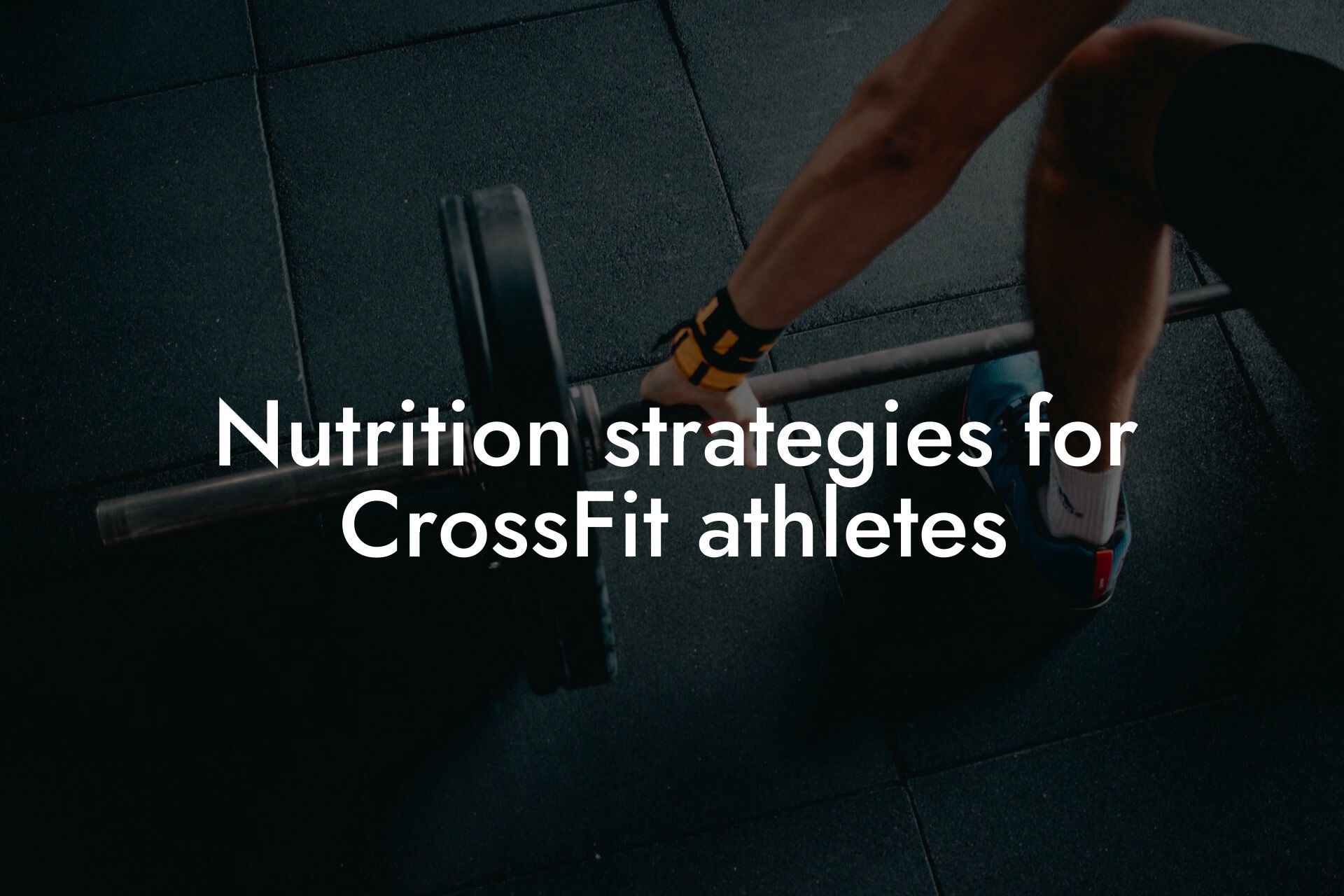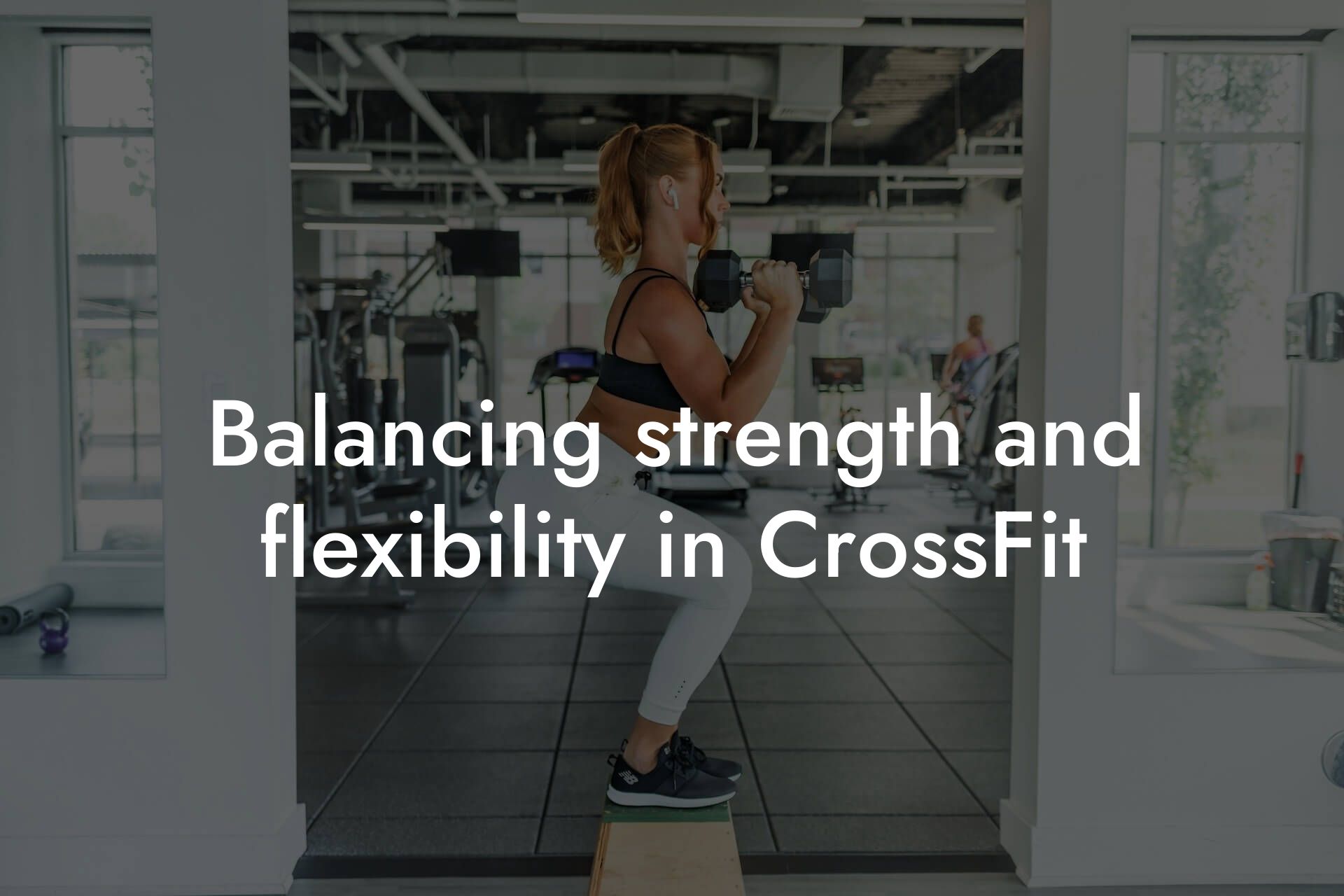As a high-earning professional, you understand the importance of optimal physical performance in achieving your goals. CrossFit, a high-intensity fitness program, demands a specific body composition to excel in its various exercises and workouts. At Tano Performance Group, we recognize the significance of body composition in CrossFit performance and are committed to providing you with comprehensive information to take your fitness journey to the next level.
Table of Contents
What is Body Composition?
Body composition refers to the percentage of fat mass and lean mass in your body. Fat mass includes body fat, whereas lean mass comprises muscle mass, bone density, and water. A healthy body composition is crucial for overall fitness and athletic performance. In CrossFit, a leaner body composition with a higher percentage of muscle mass can significantly enhance performance and reduce the risk of injuries.
Why is Body Composition Important in CrossFit?
In CrossFit, body composition plays a vital role in determining your performance and progress. A leaner body composition can improve your power-to-weight ratio, allowing you to lift heavier weights and perform exercises more efficiently. Additionally, a higher percentage of muscle mass can increase your endurance and stamina, enabling you to complete workouts with greater intensity and speed.
The Ideal Body Composition for CrossFit
The ideal body composition for CrossFit varies depending on the individual's goals and fitness level. However, a general guideline is to aim for a body fat percentage between 10-15% for men and 15-20% for women. This range allows for optimal muscle mass and strength while minimizing excess body fat. At Tano Performance Group, our DEXA machine provides a detailed body composition analysis, helping you understand your current body composition and set realistic goals for improvement.
How to Measure Body Composition
There are several methods to measure body composition, including:
- Dual-Energy X-ray Absorptiometry (DEXA): A non-invasive, highly accurate method that uses X-rays to measure bone density and body composition.
- Hydrostatic Weighing: A method that measures body density by weighing you underwater.
- Skinfold Measurements: A method that measures body fat by pinching the skin at specific points.
- Bioelectrical Impedance Analysis (BIA): A non-invasive method that uses electrical currents to measure body composition.
At Tano Performance Group, we recommend using DEXA scans for their high accuracy and ability to provide detailed information on body composition.
The Impact of Body Composition on CrossFit Performance
A leaner body composition can significantly improve CrossFit performance by:
- Increasing power and strength
- Enhancing endurance and stamina
- Reducing the risk of injuries
- Improving overall athleticism
Conversely, excess body fat can hinder performance by reducing power, increasing the risk of injuries, and decreasing overall athleticism.
How to Improve Body Composition for CrossFit
Improving body composition for CrossFit requires a combination of proper nutrition, consistent training, and patience. Here are some tips to help you achieve your goals:
- Focus on a balanced diet with adequate protein, healthy fats, and complex carbohydrates.
- Incorporate strength training exercises to build muscle mass.
- Engage in high-intensity interval training (HIIT) to improve cardiovascular fitness and burn excess body fat.
- Get adequate rest and recovery to allow your body to adapt to the demands of CrossFit.
- Monitor your progress through regular body composition analysis using DEXA scans or other methods.
In conclusion, body composition plays a critical role in CrossFit performance. By understanding your current body composition and setting realistic goals for improvement, you can optimize your fitness journey and achieve greater success in CrossFit. At Tano Performance Group, we are committed to providing you with the tools and information you need to succeed. Contact us today to schedule a DEXA scan and take the first step towards achieving your fitness goals.
Frequently Asked Questions
What is body composition, and why is it important in CrossFit?
Body composition refers to the proportion of fat and lean mass in the body. In CrossFit, body composition plays a critical role in performance as it affects an athlete's power, speed, agility, and endurance. A leaner body composition can improve performance by reducing body weight, increasing strength-to-weight ratio, and enhancing overall athleticism.
How does body fat percentage impact CrossFit performance?
Excess body fat can negatively impact CrossFit performance by increasing energy expenditure, reducing power output, and decreasing speed and agility. A higher body fat percentage can also increase the risk of injury. On the other hand, a leaner body composition can improve performance by allowing athletes to move more efficiently and effectively.
What is the ideal body fat percentage for CrossFit athletes?
The ideal body fat percentage for CrossFit athletes varies depending on the individual and their goals. Generally, male CrossFit athletes aim to maintain a body fat percentage between 6-12%, while female athletes aim for 16-23%. However, these are general guidelines, and the ideal body fat percentage may vary depending on factors such as age, muscle mass, and athletic goals.
How does muscle mass impact CrossFit performance?
Muscle mass plays a critical role in CrossFit performance as it affects an athlete's strength, power, and endurance. A higher muscle mass can improve performance by increasing strength, speed, and agility. Additionally, muscle mass can also help with injury prevention by providing additional support and stability to joints and muscles.
What is the relationship between bone density and CrossFit performance?
Bone density is an important aspect of body composition that affects CrossFit performance. High-impact exercises such as those found in CrossFit can help improve bone density, which can reduce the risk of osteoporosis and fractures. Additionally, good bone density can also improve athletic performance by providing a solid foundation for muscle contractions and movements.
How can I measure my body composition?
There are several ways to measure body composition, including dual-energy X-ray absorptiometry (DXA), hydrostatic weighing, and skinfold measurements. Additionally, body fat percentage can also be estimated using body mass index (BMI) and circumference measurements. It's essential to work with a qualified healthcare professional or certified coach to determine the best method for your individual needs.
What are the benefits of tracking body composition in CrossFit?
Tracking body composition in CrossFit can provide valuable insights into an athlete's progress, allowing them to make informed decisions about their training and nutrition. By monitoring body composition, athletes can identify areas for improvement, optimize their training and nutrition, and achieve their performance goals.
How often should I track my body composition?
The frequency of tracking body composition depends on individual goals and needs. Generally, athletes may track their body composition every 4-6 weeks to monitor progress and make adjustments to their training and nutrition. However, more frequent tracking may be necessary for athletes with specific goals, such as competitive athletes or those preparing for a physique competition.
What are the common mistakes athletes make when tracking body composition?
Common mistakes athletes make when tracking body composition include not using a consistent measurement method, not accounting for changes in muscle mass, and not considering other factors that may affect body composition, such as hydration and glycogen storage.
How does nutrition impact body composition in CrossFit?
Nutrition plays a critical role in body composition in CrossFit. A well-planned diet that is tailored to an athlete's individual needs can help optimize body composition by promoting muscle growth, reducing body fat, and supporting overall health and performance.
What are the key nutrients for optimizing body composition in CrossFit?
The key nutrients for optimizing body composition in CrossFit include protein, carbohydrates, and healthy fats. Adequate protein intake is essential for muscle growth and repair, while carbohydrates provide energy for high-intensity exercise. Healthy fats support hormone production and overall health.
How does hydration impact body composition in CrossFit?
Hydration is critical for optimal body composition in CrossFit. Adequate hydration can help regulate body temperature, transport nutrients and oxygen to muscles, and support overall athletic performance. Dehydration, on the other hand, can negatively impact body composition by reducing muscle mass and increasing body fat.
What are the best exercises for improving body composition in CrossFit?
The best exercises for improving body composition in CrossFit include compound exercises such as squats, deadlifts, and bench press. These exercises work multiple muscle groups at once, promoting muscle growth and increasing metabolism. Additionally, high-intensity interval training (HIIT) and plyometric exercises can also help improve body composition by increasing caloric expenditure and promoting fat loss.
How does sleep impact body composition in CrossFit?
Sleep is essential for optimal body composition in CrossFit. During sleep, the body repairs and rebuilds muscle tissue, regulates hormones, and supports overall recovery. Adequate sleep can help promote muscle growth, reduce body fat, and support overall athletic performance.
What are the benefits of working with a coach or trainer to improve body composition in CrossFit?
Working with a coach or trainer can provide valuable guidance and support in improving body composition in CrossFit. A qualified coach or trainer can help athletes develop a personalized training and nutrition plan, provide accountability and motivation, and offer expert guidance on optimal body composition for CrossFit performance.
How does stress impact body composition in CrossFit?
Chronic stress can negatively impact body composition in CrossFit by promoting muscle breakdown, increasing body fat, and disrupting hormone regulation. Managing stress through techniques such as meditation, yoga, and deep breathing exercises can help support optimal body composition and overall athletic performance.
What are the common myths about body composition in CrossFit?
Common myths about body composition in CrossFit include the idea that muscle gain is always accompanied by fat gain, that body fat percentage is the only measure of body composition, and that extreme calorie restriction is necessary for fat loss. These myths can be debunked by working with a qualified coach or trainer and focusing on a balanced approach to training and nutrition.
How does age impact body composition in CrossFit?
Age can impact body composition in CrossFit by affecting hormone levels, metabolism, and muscle mass. As athletes age, they may experience a decline in muscle mass and an increase in body fat, which can negatively impact athletic performance. However, with proper training and nutrition, athletes can maintain optimal body composition and performance well into their 40s, 50s, and beyond.
What are the benefits of maintaining optimal body composition for CrossFit athletes?
Maintaining optimal body composition can provide numerous benefits for CrossFit athletes, including improved performance, increased confidence, and enhanced overall health and well-being. By focusing on optimal body composition, athletes can optimize their training and nutrition, reduce the risk of injury, and achieve their performance goals.
How does body composition impact mental performance in CrossFit?
Body composition can impact mental performance in CrossFit by affecting confidence, motivation, and overall mental toughness. When athletes feel confident in their physical appearance and abilities, they are more likely to perform at a higher level and push themselves to new heights.
What are the common challenges athletes face when trying to improve body composition in CrossFit?
Common challenges athletes face when trying to improve body composition in CrossFit include lack of motivation, poor nutrition, inadequate training, and inconsistent tracking and measurement. By addressing these challenges and focusing on a balanced approach to training and nutrition, athletes can overcome obstacles and achieve their body composition goals.
How can Tano Performance Group help me improve my body composition in CrossFit?
Tano Performance Group offers a comprehensive approach to improving body composition in CrossFit, including personalized coaching, nutrition planning, and training programs. Our team of experts can help athletes optimize their body composition, improve their performance, and achieve their fitness goals.
Here are some related articles you might love...
- Nutrition strategies for CrossFit athletes
- Balancing strength and flexibility in CrossFit
- How DEXA scans can benefit CrossFit enthusiasts
- The importance of muscle recovery in CrossFit
- How to maintain bone density with CrossFit training
- Improving endurance for CrossFit competitions
- Strength training tips specific to CrossFit workouts
- Preventing injuries in CrossFit: A comprehensive guide
- Reducing body fat for better CrossFit performance
Zak Faulkner
Zak Faulkner is a leading authority in the realm of physical health and body composition analysis, with over 15 years of experience helping professionals optimise their fitness and well-being. As one the experts behind Tano Performance Group, Zak has dedicated his career to providing in-depth, science-backed insights that empower clients to elevate their physical performance and overall health.
With extensive knowledge of DEXA technology, Zak specializes in delivering comprehensive body assessments that offer precise data on body fat, muscle mass, bone density, and overall physique. His expertise enables individuals to make informed decisions and achieve their fitness goals with accuracy and confidence. Zak’s approach is rooted in a deep understanding of human physiology, combined with a passion for helping clients unlock their full potential through personalised strategies.
Over the years, Zak has earned a reputation for his commitment to excellence, precision, and client-focused service. His guidance is trusted by top professionals who demand the best when it comes to their health. Whether advising on fitness programs, nutritional strategies, or long-term wellness plans, Zak Faulkner’s insights are a valuable resource for anyone serious about taking their health and fitness to the next level.
At Tano Performance Group, Zak continues to lead our Content Team revolutionising how professionals approach their physical health, offering unparalleled expertise that drives real results.




